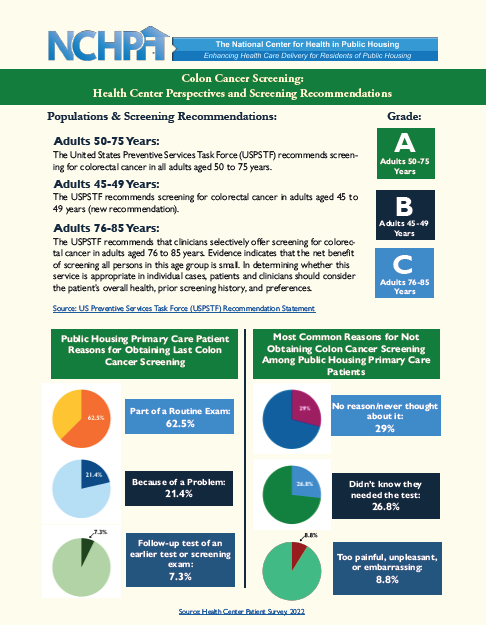
Colon Cancer Screening: Health Center Perspectives and Screening Recommendations
Medically disadvantaged communities, notably residents of public housing and the HUD-assisted, are less likely than the general U.S. population to perform their colorectal cancer screening within recommended guidelines and more likely to be diagnosed with colorectal cancer. In this document, we provide the results of our analyses of the 2022 HRSA Health Center Patient Survey, specifically results which provide insight into the colorectal cancer screening disparities experienced by residents of public housing, the HUD-assisted, and the promising practices supported by the data analyses.
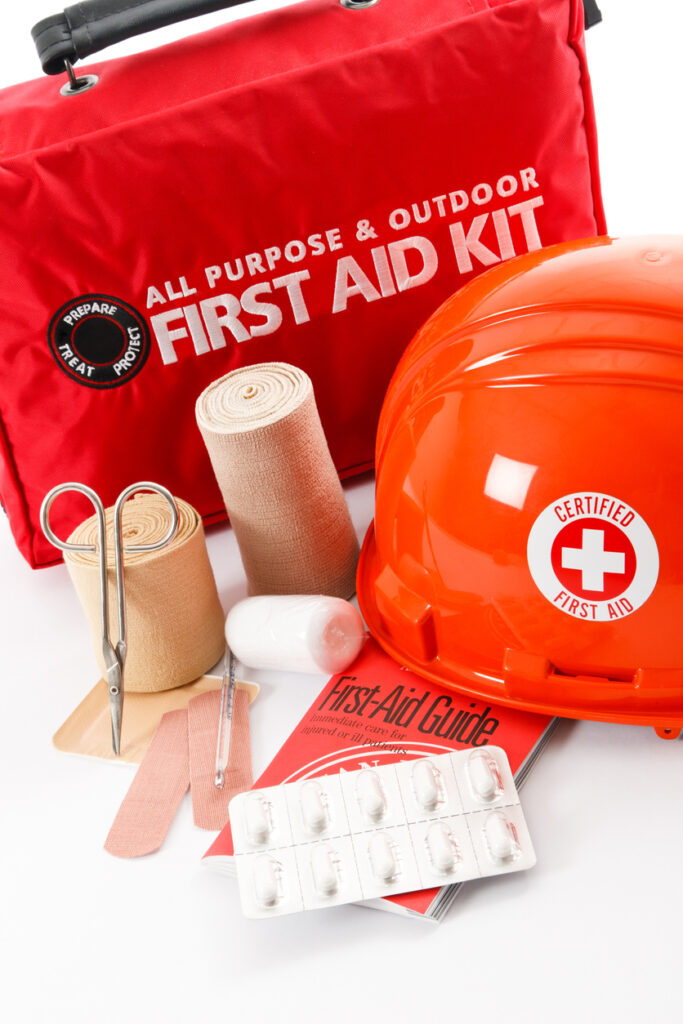
Emergency Preparedness for Public Housing Residents
Residents of public housing are disproportionately affected by emergencies. Data indicates that they often face more adverse effects during crises. To address this issue, NCHPH has developed an informative infographic emphasizing the importance of emergency preparedness for public housing residents.
This visually engaging resource presents supporting data and actionable steps individuals can take to prepare for emergencies. Whether you speak English or Spanish, the infographic is accessible in both languages.
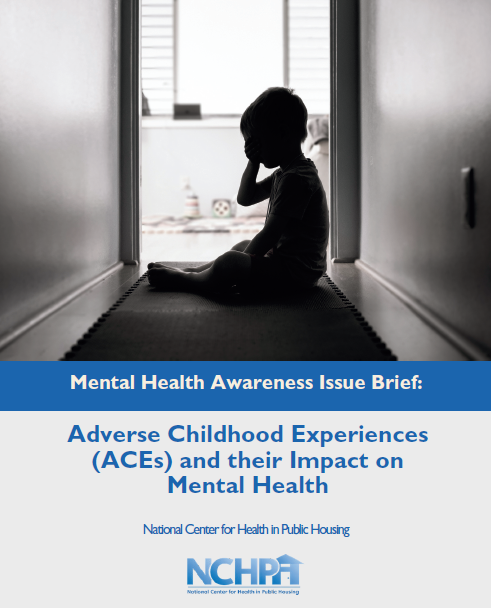
Mental Health Awareness Issue Brief: Adverse Childhood Experiences (ACEs) and their Impact on Mental Health
Adverse Childhood Experiences (ACEs) have a lifelong impact on the health and well-being of patients. The impact of ACEs on patient care is significant. By prioritizing trauma informed/culturally competent care (TIC), social services and clinical staff can help to improve the impact of medical and behavioral health services. In this brief, we present an overview of ACEs and their impact on patient health.
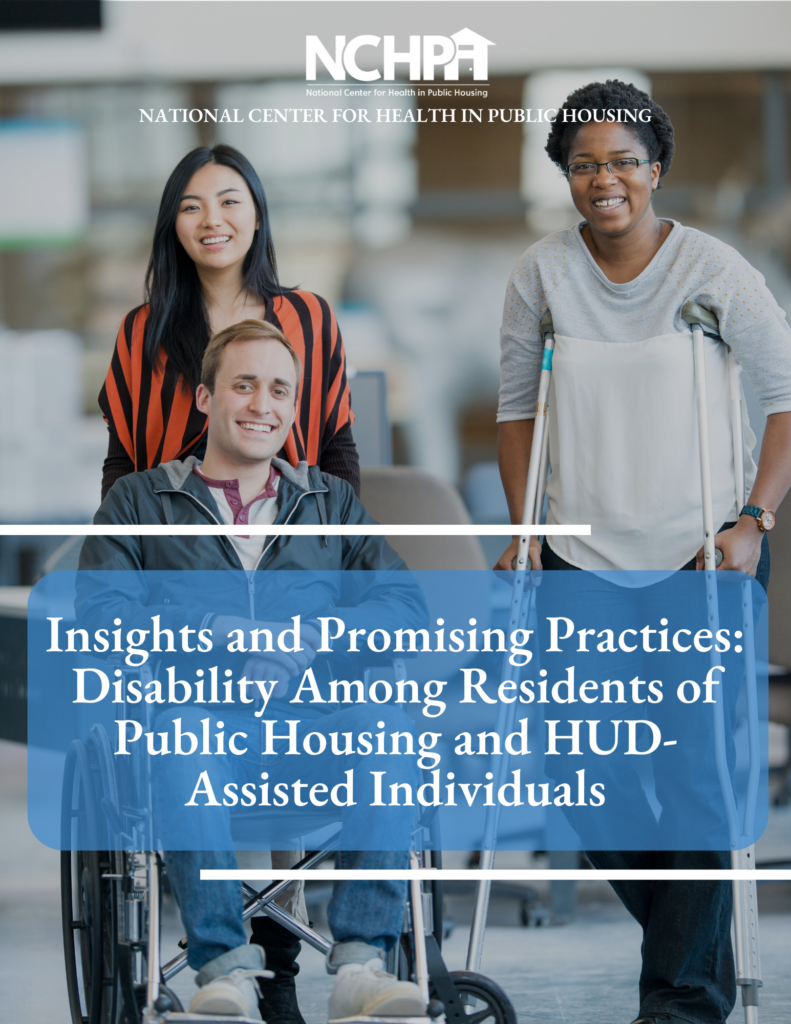
Insights and Promising Practices: Disability Among Residents of Public Housing and HUD-Assisted Individuals
Among the fastest-growing populations in the U.S., individuals with emotional, intellectual or physical disabilities represent a large and growing proportion of the patients served by health centers, particularly those who provide care to underserved populations and communities.
In this publication, we present unique analyses completed by researchers at the National Center for Public Housing (NCHPH) using publicly available data provided by the Health Resources and Services Administration (HRSA), Centers for Disease Control and Prevention (CDC), and the United States Government Accountability Office (GAO) which provide a unique perspective of the lives of patients of health centers, Residents of Public Housing and the HUD-Assisted.
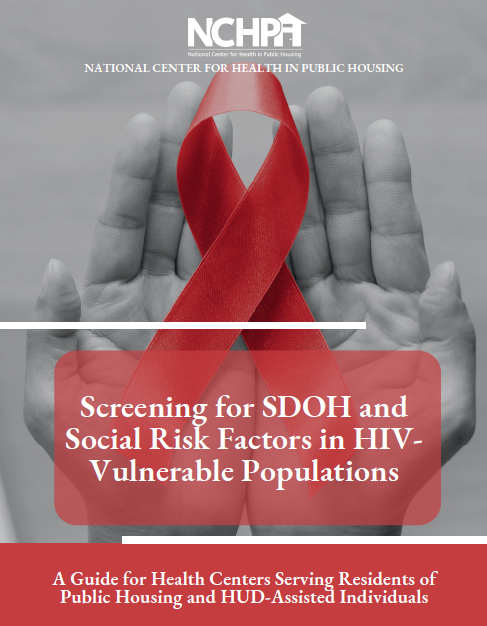
Screening for SDOH and Social Risk Factors in HIV-Vulnerable Populations: A Guide for Health Centers Serving Residents of Public Housing and HUD-Assisted Individuals
Health centers can support HIV+ patients and those vulnerable to HIV by integrating screening for the SDOH into their standard operating procedures. In this reference guide, we present a step-by step approach to integrating SDOH screening into the clinical and social support operations of health centers and PHAs. It is designed for use by both organizations that have existing social support infrastructure and wish to review their current delivery model and by those with limited social support infrastructure who are interested in expanding their SDOH program footprint.
